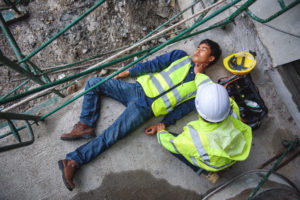 The coming-and-going rule largely makes commuting employees ineligible for workers’ comp. In simple terms, employees injured in an accident while on their way to or from work are liable for their injuries, not the employer. Workers’ comp also doesn’t cover workers who are running personal errands.
The coming-and-going rule largely makes commuting employees ineligible for workers’ comp. In simple terms, employees injured in an accident while on their way to or from work are liable for their injuries, not the employer. Workers’ comp also doesn’t cover workers who are running personal errands.
Situations When Commuting Employees May Be Covered
Traveling Employees
The coming-and-going rule exempts employees who are always on the road. These employees don’t have a fixed workplace because their job involves a lot of traveling. Medical practitioners, plumbers, and salespersons are examples of traveling employees.
On-Call Employees
On-call employees are eligible for workers’ compensation from the time they were called into work. The cover applies even if these employees get injured at home while on call.
Driving a Company Vehicle
If an employee gets injured while driving a company vehicle, he or she may qualify for workers’ comp. He or she must, however, have been on official duty when the accident happened for the coverage to apply.
Crashes that Happen While an Employee is still at the Workplace
Walkways, grassy areas, parking lots, and driveways are part of the workplace. If a worker is injured while getting in or out of such areas, he or she could be eligible for compensation.
Running a Work-Related Errand
An employee who gets injured running a job-related errand while heading home from work may qualify for compensation. Likewise, an employee who is hurt while running a job-related errand during personal time may be compensated.
Business Travel
A worker who gets hurt during business travel may obtain compensation, even if he or she wasn’t working when the accident happened. Courts are usually open to determining qualification for workers’ comp in work-related travel accidents, even in cases where the injurious event wouldn’t be categorized as work-related. Several potential situations may arise in the event of a work-related travel accident. They include:
- The employee caused the accident, and the cost is within his or her insurance. In such a scenario, the employee will be legally responsible for the accident and his or her insurance will cover the costs.
- The employee is at fault, and the cost exceeds his or her insurance. In this scenario, the employee would still be liable, and he or she may be in most cases required to cover all the damages. The employer may, however, cover some of the damages in some cases.
- Another person caused the accident. In this case, the injured employee can file a claim against the liable person for the damages and seek workplace injury compensation to help him or her cover the lost salary or wages.
The Course of Action After A Work-Related Accident
Taking the right steps after a work-related car accident can increase the chance of an injured worker securing reasonable compensation. These steps include gathering information about the accident, seeking immediate medical attention, following the doctor’s advice, and notifying the employer about the accident.
Seeking workplace injury compensation on time and working closely with an attorney in case of a potential personal injury claim is also a wise idea. The attorney can use various strategies, including negotiating a single-payment settlement and filing a lawsuit, to ensure the injured employee will secure reasonable compensation.


